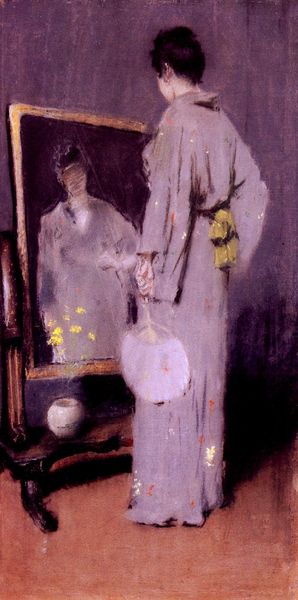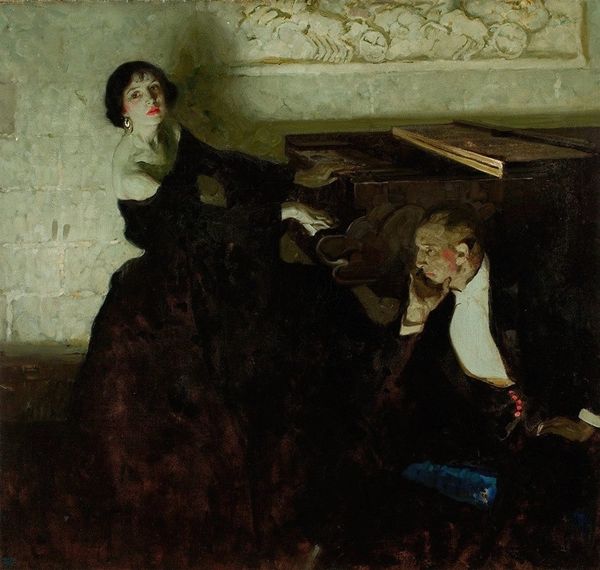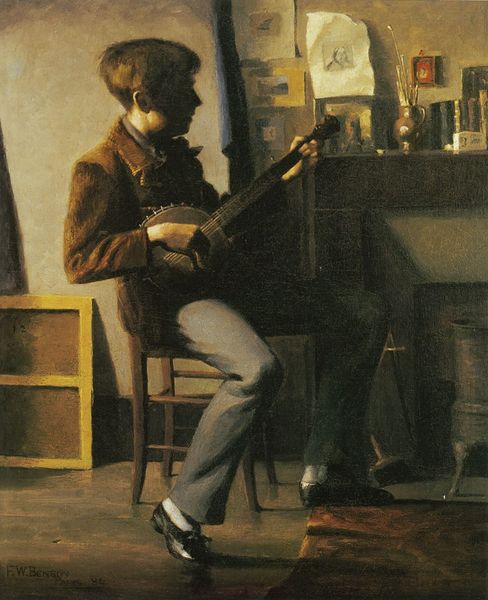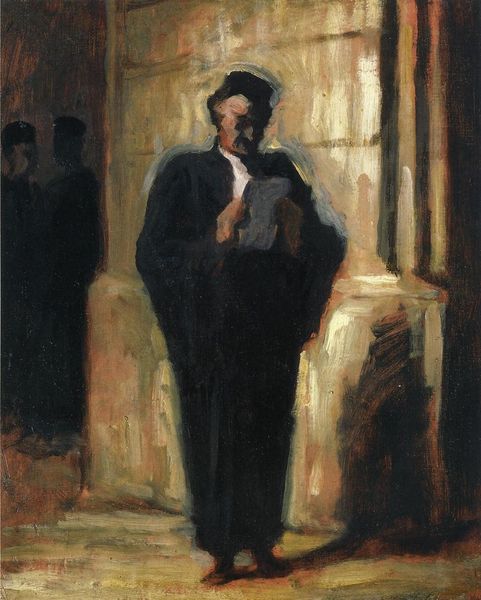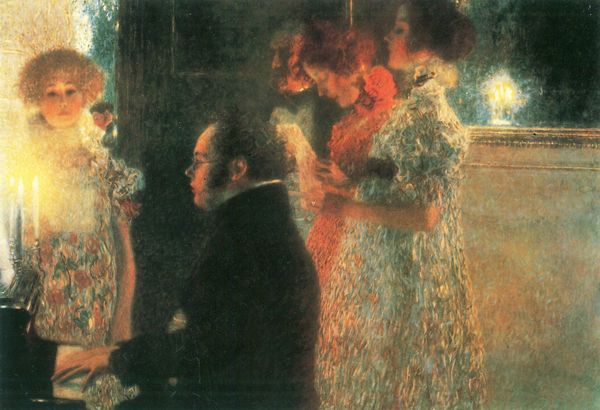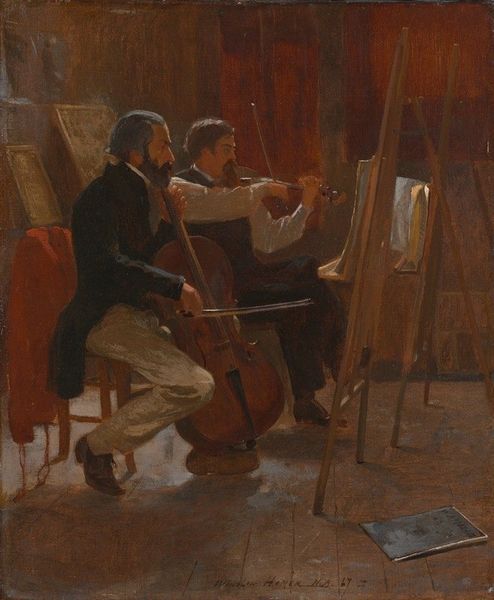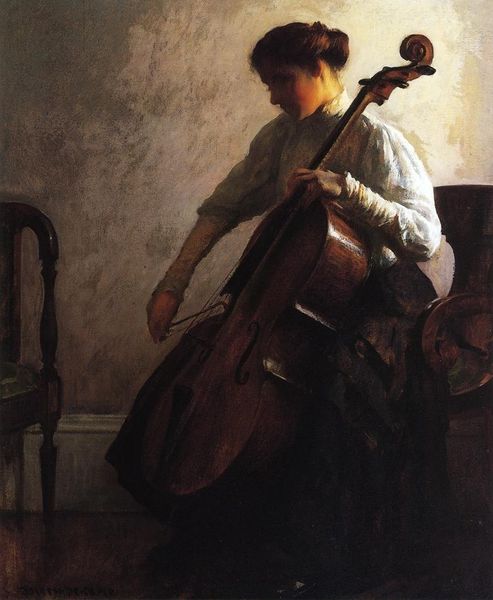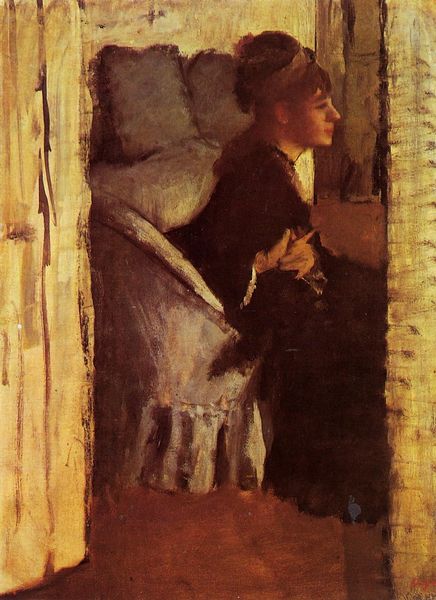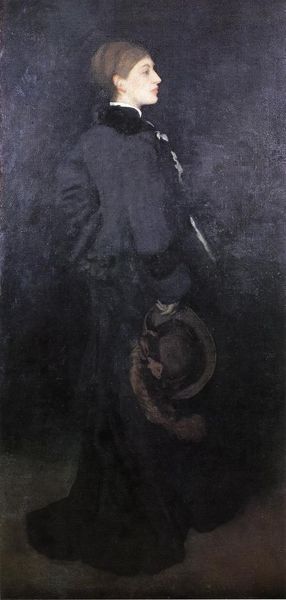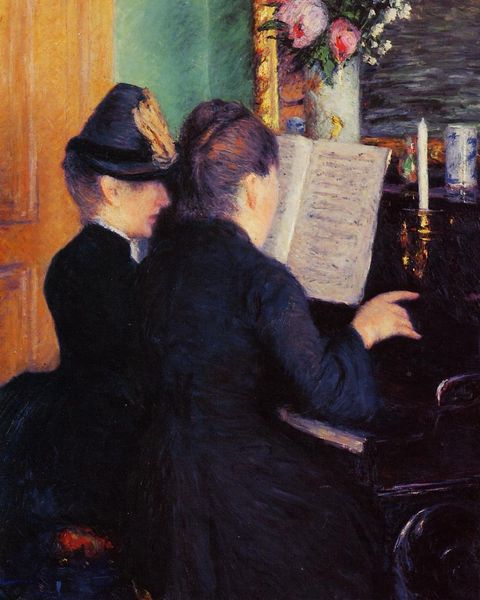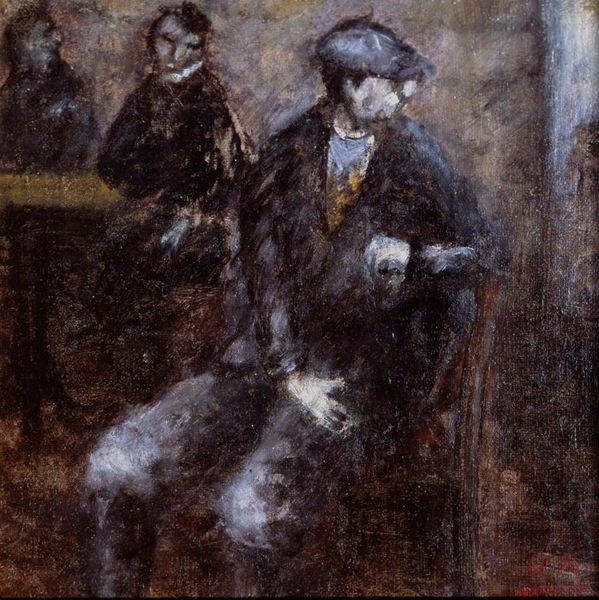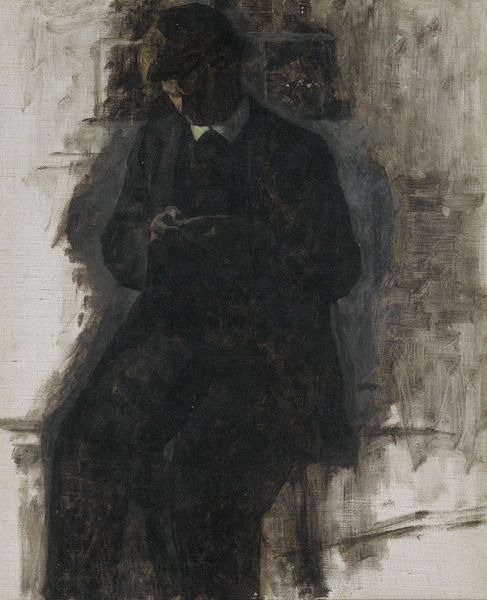
oil-paint, impasto
portrait
impressionism
oil-paint
figuration
oil painting
impasto
neo expressionist
genre-painting
post-impressionism
realism
Copyright: Public domain
Editor: So, here we have Tom Roberts's "The Violin Lesson" from 1889, rendered in oil paint. There's a certain solemnity to the scene, wouldn’t you agree? Two figures, presumably a student and instructor. What strikes you most about this work? Curator: I see a fascinating snapshot of bourgeois life and cultural capital being transmitted. Consider the period: late 19th century, a time of shifting social structures. Who had access to artistic training, and what did it signify? How did art reinforce or challenge prevailing notions of class and gender roles? The instructor, likely male, occupies a position of authority, while the student...do you see a forced conformity or a genuine aspiration? Editor: I hadn't considered that power dynamic so explicitly. I was mainly drawn to the composition, the muted palette. I guess I assumed there was an innate enjoyment for playing, without any other agenda. Curator: The beauty of art lies in its ambiguity! But we can't divorce it from its historical context. Ask yourself: What societal expectations were placed on young men in this era? The acquisition of "high" culture, like violin playing, was often seen as a means of upward mobility, a performance of respectability. But to whose benefit? Was it truly about individual expression or about conforming to a predetermined mold? Do we still feel this pressure today to pursue “valuable” skills for external validation rather than intrinsic pleasure? Editor: That definitely provides a more critical lens for appreciating the painting, or any painting from that period for that matter. I can see how the pursuit of certain skills had, and maybe still have, implications tied to social and cultural standing. Curator: Exactly! "The Violin Lesson," seemingly a simple scene, opens up a world of questions about societal expectations, the pursuit of knowledge, and the subtle ways power operates, even within something as seemingly innocent as an art lesson. Editor: Thanks for this deeper understanding, moving past initial aesthetic judgements to uncover layers of socio-historical meaning.
Comments
No comments
Be the first to comment and join the conversation on the ultimate creative platform.
